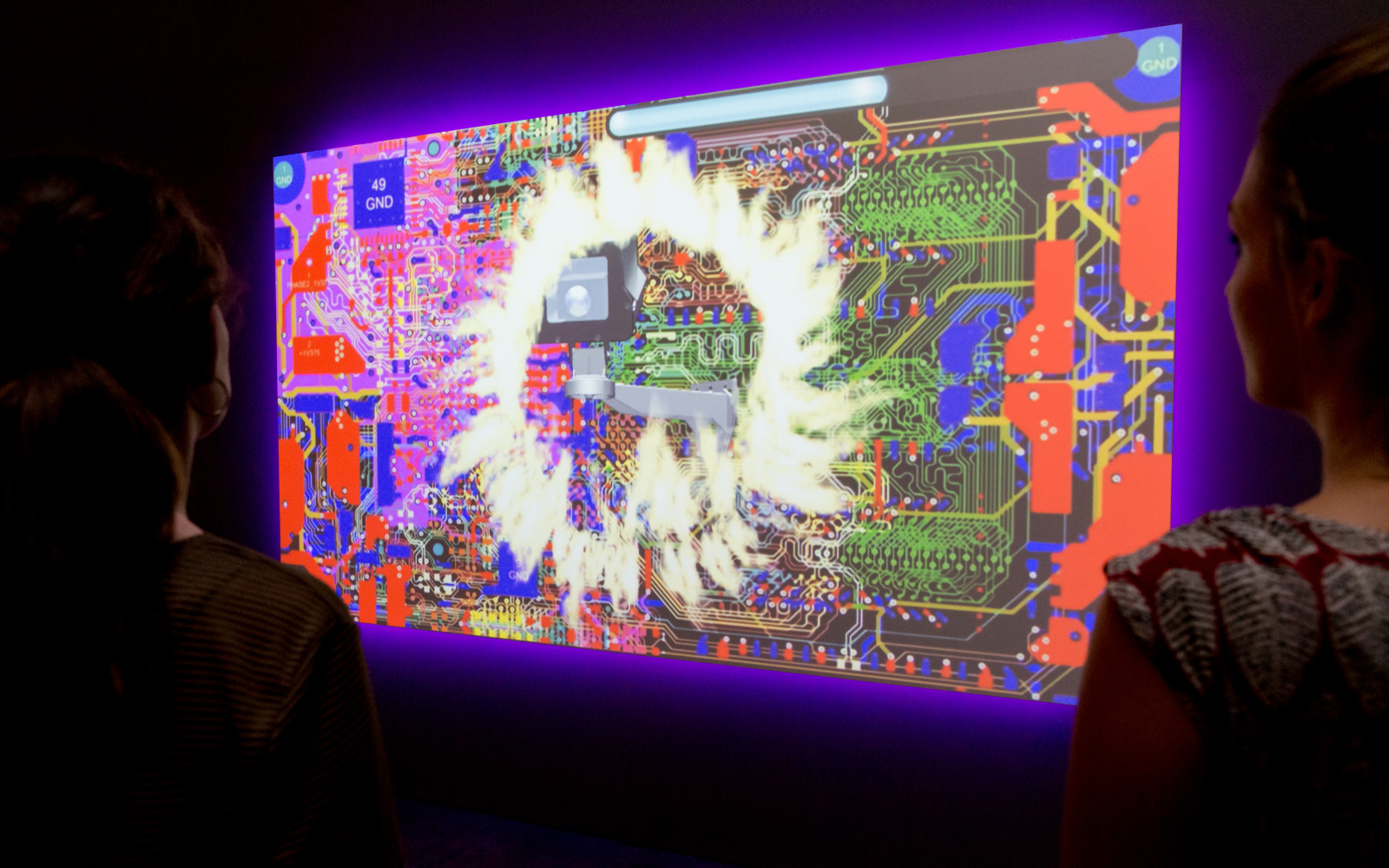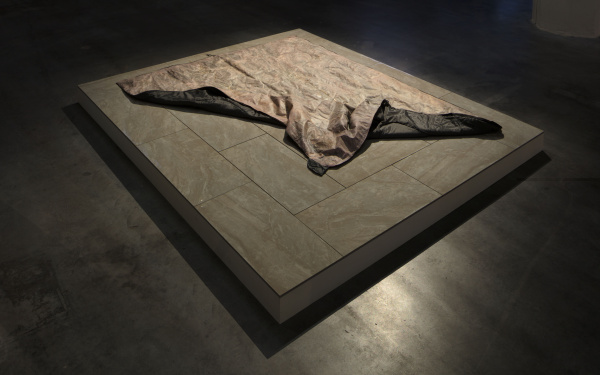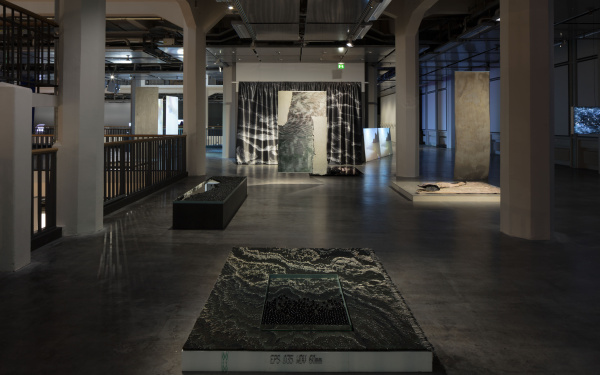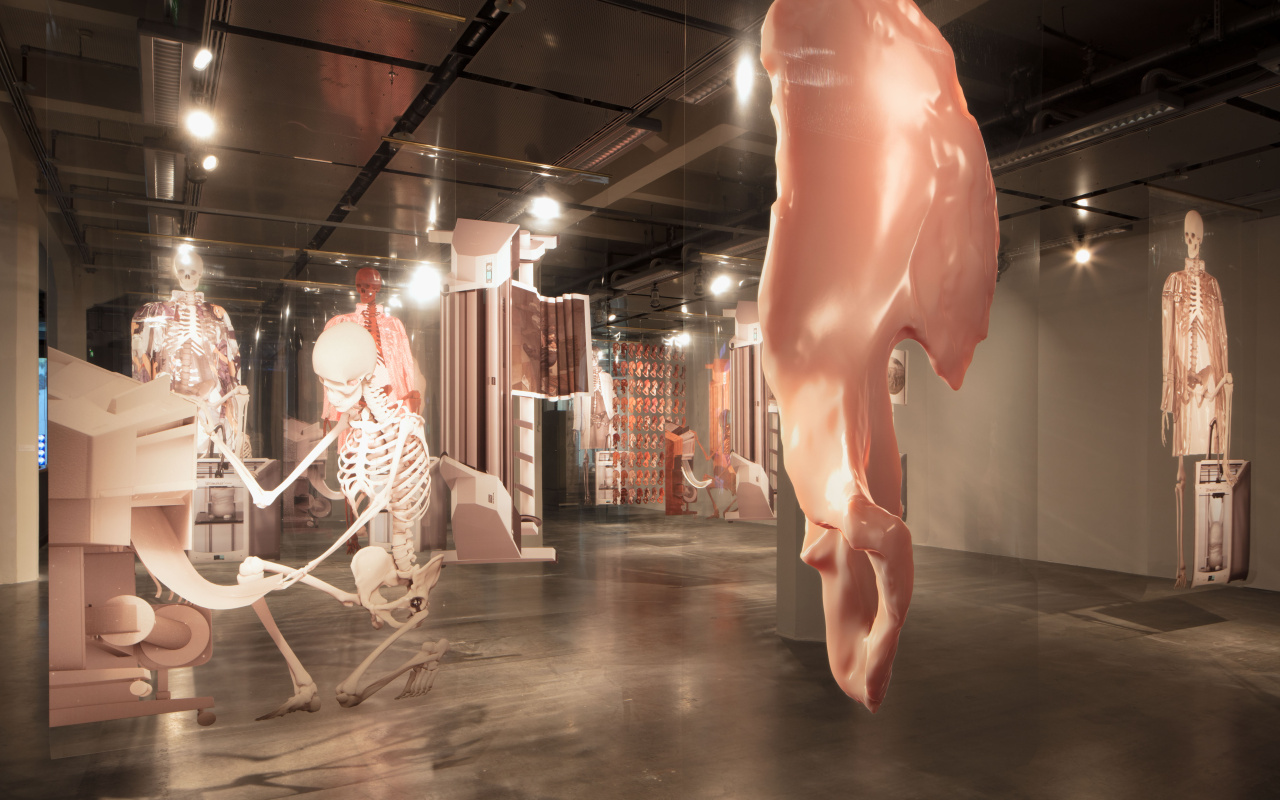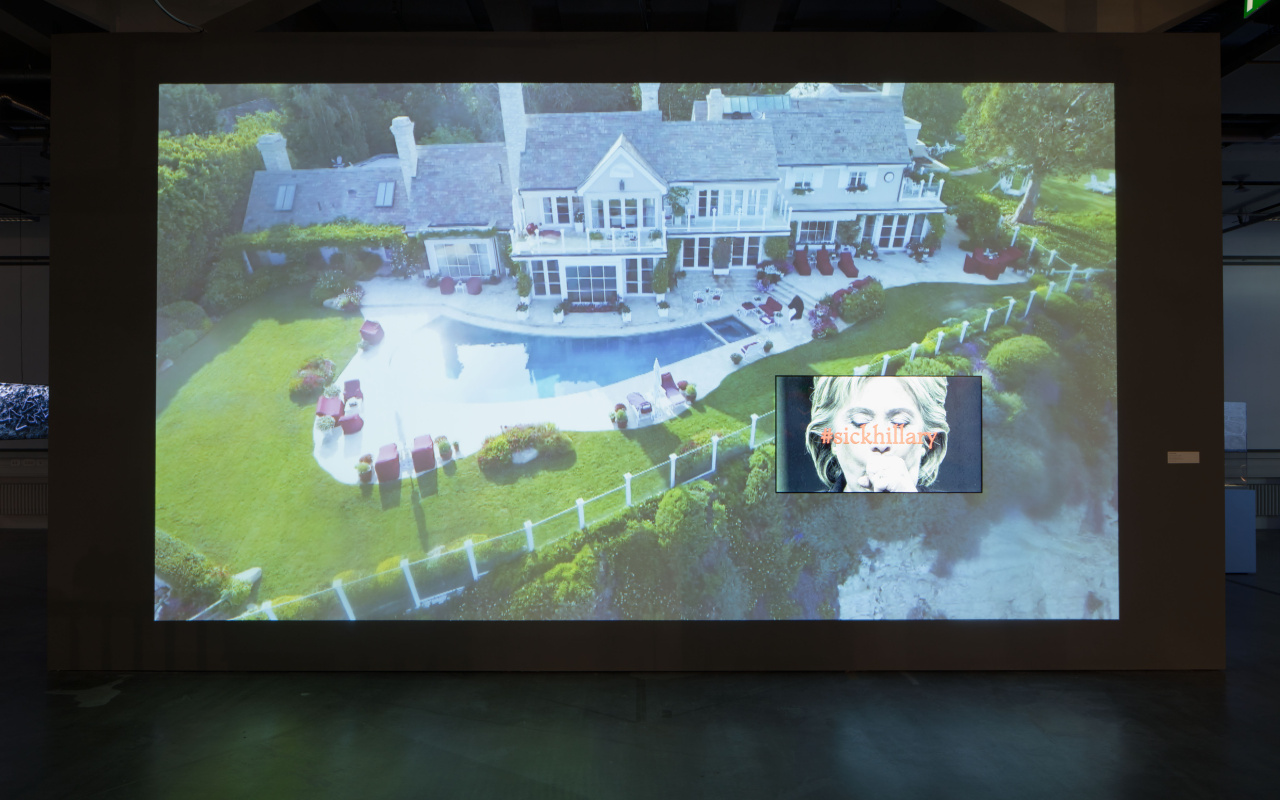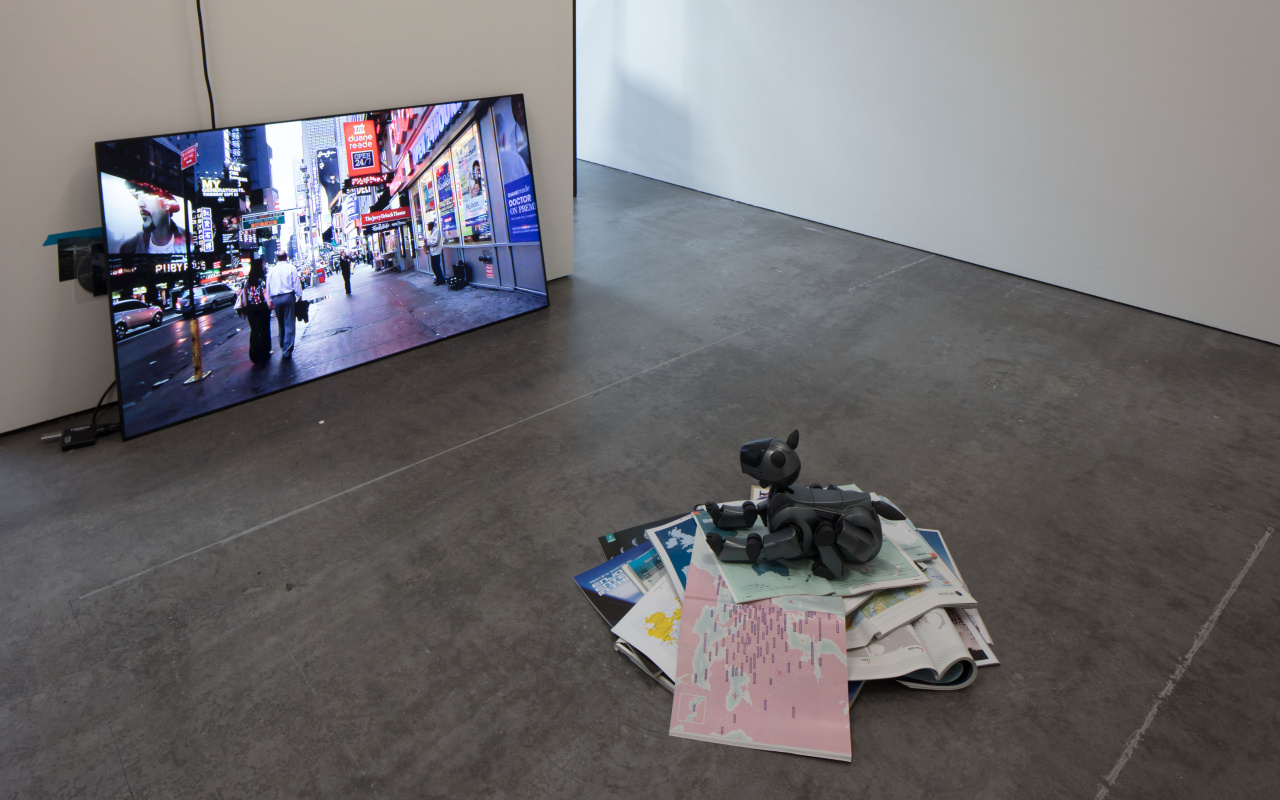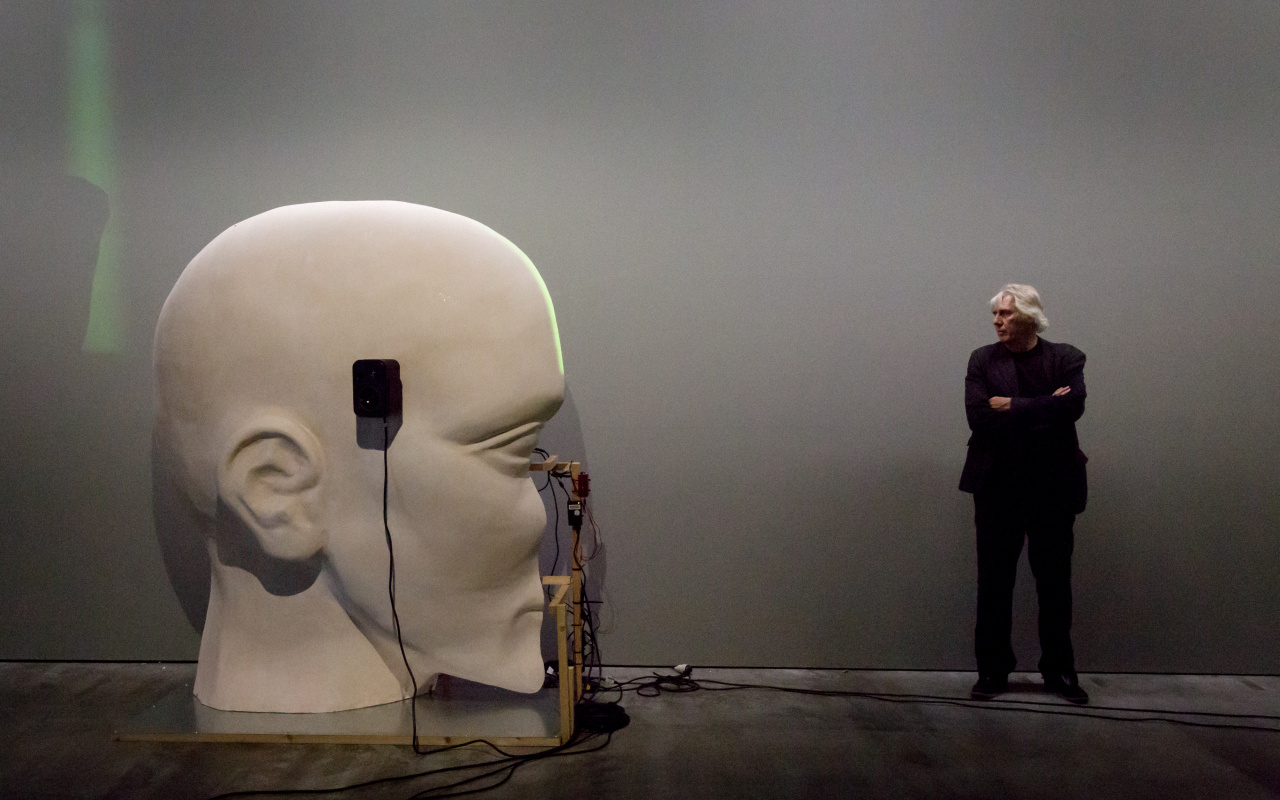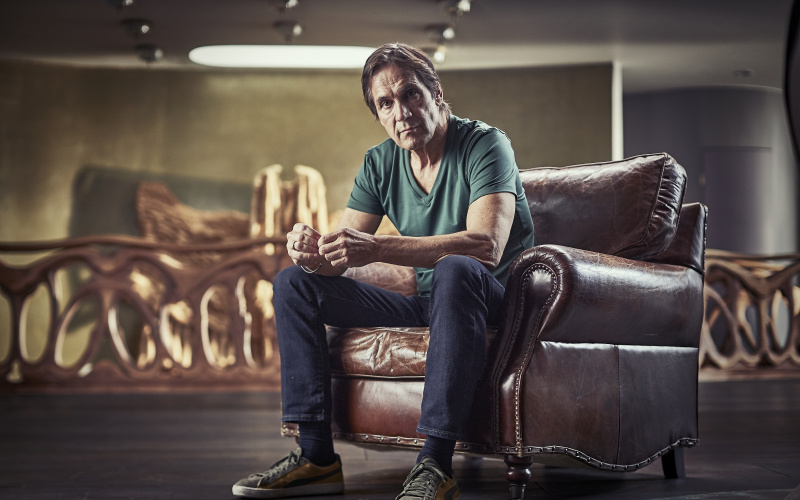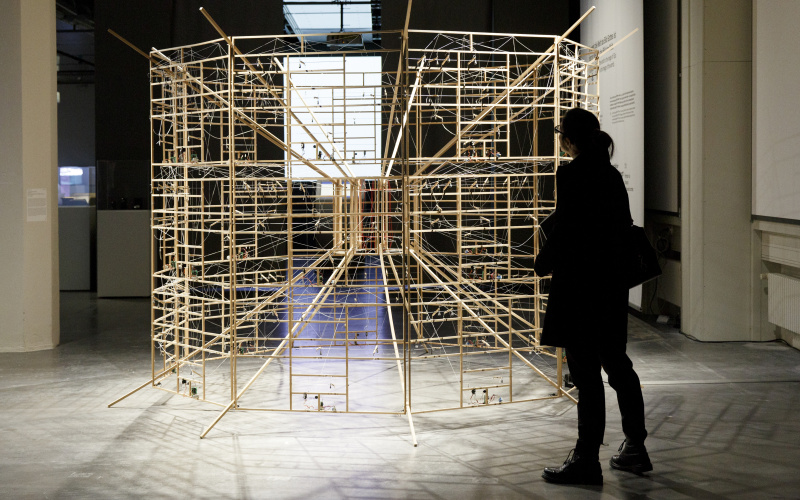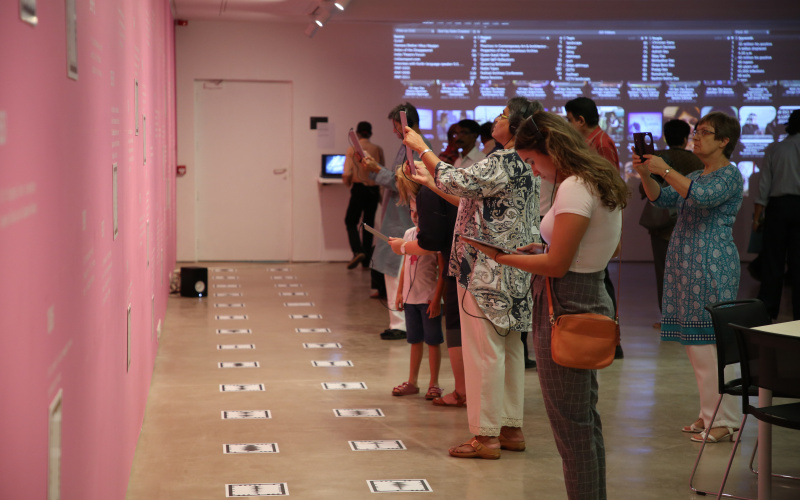Materialised Pictures
Digital art is materialized – On her blog sofrischsogut.com the freelance photographer and author Anni Kohout, explores works from the exhibition »Hybrid Layers«, which will be held at the ZKM until January 01, 2018.
BY ANNI KOHOUT
When you scroll through your dashboard on Tumblr, you never know when something is art and when it’s not. You never know whether this picture that pops up on your timeline is an advertisement photo for a prosthesis from Japan traced from the depths of the internet by some oblique user or whether it’s a piece of artwork by an artist who is grappling with humanoid aesthetics. You never know whether a producer or a consumer is behind the posting. You never know whether the picture has been created, handmade or simply forwarded. You never know whether it is the original, a copy or a ready-made version.
And none of this actually plays any sort of role. Because the pictures on Tumblr are not meant to challenge their observers in terms of art history or expertise. They are meant to challenge aesthetically and emotionally. And to do it immediately. Because otherwise such a picture is simply not noticed when scrolling through. And this is – contrary to the constant conjuring up of a flood of pictures – not a natural disaster by any means, but a natural and helpful perception mechanism, and possibly even a productive challenge for artists, who can test how their work proves itself in such a place.
Translation of digital into analogue
In the exhibition room, in the White Cube and among a few, carefully selected pieces, such a review of images naturally does not occur. Especially as the art room (and when it suddenly comes to works that are conceived with the »post-internet« label) only has a few pictures in it that simply hang on the wall, without all the bells and whistles and trappings of installation art.
This is also the case in the »Hybrid Layers« exhibition at the ZKM, which deals with artistic positions through which attempts are made to transport the digital world back into the analogue. »Attempted« because success is in no way preprogramed and »back« because – as is formulated in the booklet accompanying the exhibition – »the focus of media art was on the transfer of the analogue world into digitality« for a long time, before artists began to dedicate themselves to the transfer back. In the meantime however, lots has developed, especially aesthetically, that does not arise from a conversion service but can be classified as purely digital.
Humorous, clever and elegant
For many artists of the exhibition, the question of the translation of digital into analogue is a question of materiality, above all. In particular, it plays a crucial role if the reported aesthetics were never material, but created purely digitally or have even been imagined. For example, various digital patterns or collages.
And it provides to be very humorous, clever and elegant if such a digital aesthetic is translated by the German artist Delia Jürgens into constellations of various objects. In fact, such objects, which would not initially be connected with the digital world at all: building materials, marbles or a sleeping bag. It is remarkable that the artist actually manages to avoid with such objects a grungy look as is otherwise inherent with many objets trouvés. Instead, she creates clear, clean, reflective, transparent, multi-faceted ensembles, which testify that »digital« can also describe a style.
Jürgens’ installation, which is on display at the ZKM is called »We thought they are Windows, but actually they are Mirrors« and you ought to actually add »but at the end they are windows.« The fact that the view is here so skilfully manipulated to the objects used, their original form of existence, their functions, contexts, and even their appearance enables a completely new perspective, and is – however much the deception would seem to be just a mirror effect – a view through the window into the present.
Potential of new artistic media
While Delia Jürgens materialises pictures, which previously had no associated material, therefore occurring as objects for the first time – its original is digital –, the reference images by Dutch artist Rachel de Joode represent classic materials of visual arts. By transporting the pictures from sound and skin to new and very distinct image carriers (which are two-dimensional but seem to be three-dimensional to the observer), she bestows on them a whole new form and suggests the potential of new artistic media, which ultimately becomes the topic of the neighbouring work of Aleksandra Domanović.
Her installation consists of large printed, transparent films, which hang from the ceiling. Skeletons, pelvic bones, printers and 3D scanners are depicted on them. The latter is also a medium, with which the original images are created. Here too, something analogue (skeletons, etc.) has been initially transferred into the digital (with the help of a 3D scanner) and ultimately translated back into the analogue range by printing the 3D models on the transparent films. And the aim here is also to bestow a haptic on the images. This functions very well, not least because the skeletons are wearing transparent trench coats (Zhora’s iconic plastic coat from the film »Blade Runner«) and are therefore implemented as the only image motif with exactly the material, which they otherwise inherently possess.
Concern about the consequences of the new media
As well as »Blade Runner«, another reference is also important for the installation of Domanović: the earliest known depiction of a print shop and bookshop, on a wood carving created in 1499 by Matthias Huss. On it, a danse macabre weaves through the print shop – a symbolic depiction of the concern about the consequences of the new media at that time. As is the case today against the internet and digital culture, there were complaints during the invention of the letterpress about the memory loss that would accompany books.
But Aleksandra Domanović does not leave it with this interpretation; instead she comments ironically in the manner of the depiction and in motivic details. All in all, the work bears witness, like much of post-internet art, to a composed, culturally-optimistic attitude towards new media. Such positions are missing all the more – only incidentally – in an exhibition such as »Luther and the Avantgarde«, which is running at the same time in Wittenberg, Berlin and Kassel and in which various artists deal with the subject of letterpress printing, but almost always arrive at culturally pessimistic depictions.
Curators under heavy criticism
With these three of 22 very carefully staged pieces, which depict various positions and all deal with individual themes, it is already clear that the exhibition is curated very well. And this has all the more weight as curators sometimes face heavy criticism everywhere else. »Abolish curators« is the summary of a recently published article by Stefan Heidenreich in the ZEIT, which is still a hot topic in his private Facebook account and has been discussed extensively.
Interesting claims about curators were revealed there: »I would say against Academic Curating. Harald Szeemann never went to curating school«; »A curator is / should always be a mediator as well«; Curators should »stage art democratically«, Curators must not be »individual«. At the same time, it is suggested that these claims would not come to fulfilment anywhere. In contrast to the exhibition in the ZKM: the four curators of »Hybrid Layers« – Giulia Bini, Sabiha Keyif, Daria Mille and Philipp Ziegler – actually manage to satisfy them, although they are thoroughly contradictory. Yes, they do exemplary work, not least because they have curated as a collaborative (which is also a demand of Heidenreich).
In this way, a well-selected, very topical (themes such as Brexit, Trump, etc.), comprehensible, educational (What does post-internet mean?) and aesthetic exhibition is developed. Indeed very contemplative – but it is »only« conceived as a teaser for a large-scale exhibition project: »Open Codes. Living in Digital Worlds«, which is planned for autumn of this year. However, this project – at least for the ZKM, which has long since been considered the most important place for new media and contemporary art – comes very late, actually too late. For example, when considering the last Berlin Biennale, which has already been dedicated exclusively to post-internet art.
Forays through the web
And the artists? Both (known and also less known, with an equal balance of women and men) important artists, who deal with personal, global and political themes, as well as a generation – or rather a scene – appear in their solidarity. All the artists are born in the 1980s, making them the first representatives of »Digital Natives«. They tell stories of their forays through the web, of their explorations in 3D and image processing programmes, of virtual reality expeditions. Most of them tell their tales with room installations, items and videos. No-one tells them with classic images on the wall.
Quite unlike Markus Lüpertz, who is exhibited in the basement and by whose works you must pass to get to the post-internet exhibition. And in addition, the »Malerfürst« [painter prince] is ever present through the dominant atriums of the ZKM and forms a contrast: the individual creators of large-format gestic images on one side and the group of »Digital Natives« with their reproductions and mash-ups on the other.
But above all, in comparison, you can see how very much the relevant styles are predetermined by their attitude and their subject. In this way, it seems inconceivable that phenomena of robotics, virtual reality or simply just of the social web are developed in the style of Markus Lüpertz – vice versa. But actually, this would be the next step in order to break open the inseparability of content and form, subject and style, which is inherent in post-internet art. This would allow the digital aesthetics of their contents to be emancipated and give painting another legitimate chance to describe phaenomena of the present.
About the Author
Anni Kohout (* 1989), studied German Studies at the Dresden University of Technology; Art science and media theory at the HfG Karlsruhe & Photography at the HGB Leipzig. By 2015 she worked at the ZKM | Karlsruhe. She is active as a freelance photographer and author (among others for art – Das Kunstmagazin, Inter/view, ZEIT online, taz.die tageszeitung, Zebrabutter, Der Greif, Kuba Paris and others), editor of the Pop-Zeitschrift and research associate at the Institute of German Studies at the University of Siegen.
Hybrid Layers
Sat, 03.06.2017 – Sun, 07.01.2018
ZKM_Lichthof 8+9
Cost: Museum admission
Category
News Category
- tracks & records
